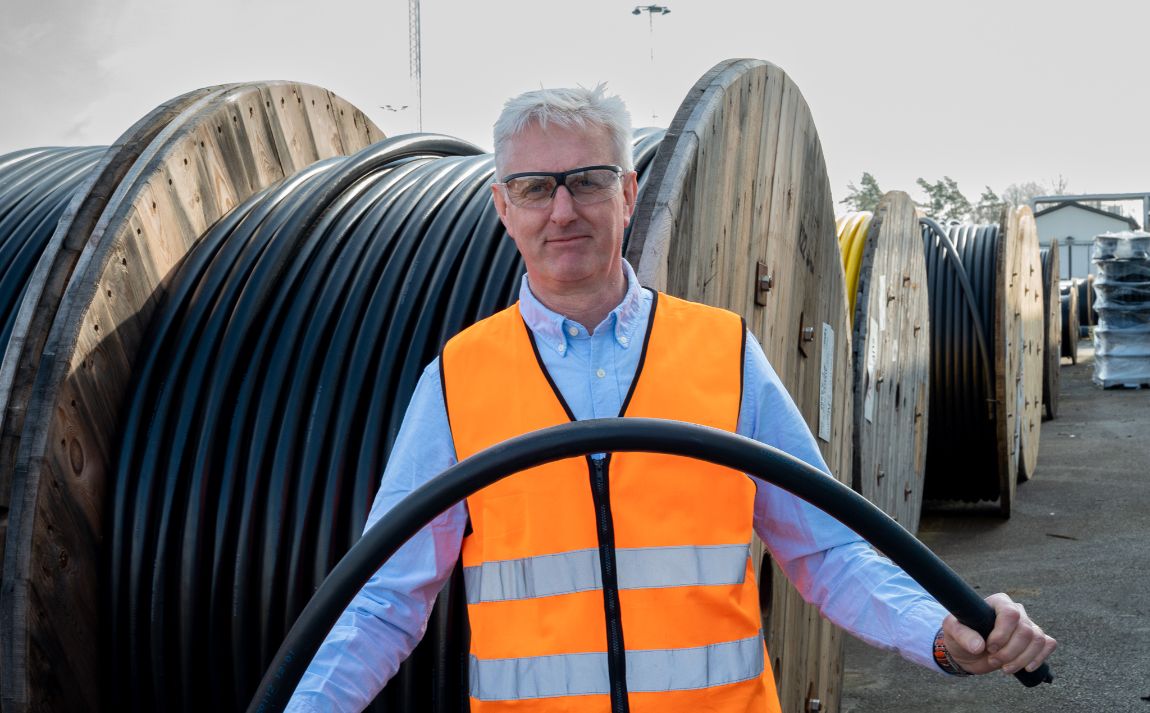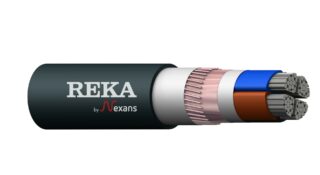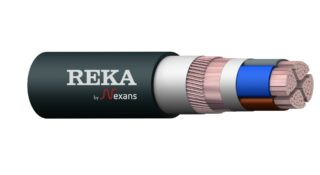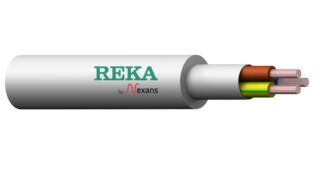Sweden’s journey toward halogen-free cables

In Sweden, all commercial and public buildings use halogen-free cables, and their demand continues to grow in both new construction and renovation projects. This shift is being driven by building code requirements, environmental certifications, and sustainability targets.
Sweden began phasing out cables containing halogens and PVC as early as 2008—nine years before official regulations were introduced.
A more sustainable option with halogen-free cables
Our Group’s Sustainability Manager Jenny Nyström and Product Manager Aron Andersson (pictured) have been involved in this development from the very beginning.
“The first halogen-free cables entered the market in the late 1990s. Around 2003–2004, environmental and sustainability concerns gained more attention in construction projects. That’s when the real estate sector began associating halogen-free cables with environmental friendliness, since they contain no phthalates or brominated flame retardants,” explains Jenny Nyström.
Phthalates are chemical compounds used as plasticizers in various plastic products. Brominated flame retardants, on the other hand, are chemicals that reduce the flammability of materials. Both can be harmful to human health and the environment if released uncontrollably.
Fire and safety take priority
While environmental factors were important to Swedes, another message proved even more central.
“Halogen-free cables offer better fire safety. They produce less toxic, black smoke, reducing the risk of smoke inhalation and making evacuation easier. In that way, they can save lives. At the same time, they can reduce fire damage costs by limiting the spread of smoke and flames. Since they do not emit corrosive gases, they also minimize damage to equipment, installations, and infrastructure,” says Andersson.
“Many began using halogen-free cables voluntarily. Often, the reason was sustainability thinking, but some players in the real estate sector also recognized the long-term benefits. They understood that minimizing the costs of fire damage could lead to significant savings. They realized that cables without PVC and halogens were the safest choice,” adds Nyström.
Stricter technical building requirements
Even though the development of good halogen-free alternatives was already underway, it wasn’t until 2017 that the Construction Products Regulation (CPR) set requirements for cables in EU countries. The regulation addressed cable fire performance, dividing them into different classes according to minimum standards.
Individual countries can decide which class to adopt, and the levels may vary depending on building type.
“Sweden has adopted fire class Dca for nearly all buildings. Halogen-free cables are practically the only ones that meet the Dca s2d2a2 fire classification requirements,” says Nyström.
Dispelling old myths
Nyström and Andersson are aware that outdated beliefs still make cables containing PVC and halogens attractive to some.
“The two biggest myths we need to dispel are that halogen-free cables are much more expensive and that they’re hard to work with. That’s no longer the case. The demand for halogen-free cables has grown, which has stabilized prices. Also, both the materials and cable design have improved significantly over the past 10–15 years,” says Andersson.
But if many other building materials still contain PVC and halogens, what is the point of using halogen-free cables?
“Our answer is that everyone should do their part. We take responsibility where we can. In addition, cables have a significant impact on fire safety and may spread fire differently than some other construction materials. Think, for example, about how cables connect different floors—and what that means in a fire,” says Nyström.
Andersson adds:
“Many fires start from electrical installations, so it’s important to prevent and reduce smoke formation from the very beginning. That’s why cables are a smart focus area when aiming to reduce the overall PVC content in a building.”
The key to success
In Sweden, the adoption of halogen-free cables was driven by a group of enthusiastic pioneers who were involved in the development process from the very beginning. They traveled around the country conducting tests and presentations, and experimenting with different solutions.
According to Product Manager Andersson, the main reason for success was a dedicated team that genuinely believed in the benefits of halogen-free cables. Their message came from the heart and was delivered with conviction—which gave real strength to the launch.
***
The original article is available here.


